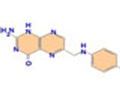Previtamin D3 production varies depending on several factors including skin type and weather conditions confirm researchers from Boston University School of Medicine (BUSM).
The previtamin D3 production varies depending on several factors including skin type and weather conditions confirm researchers from Boston University School of Medicine (BUSM).
The study will appear in the March 2008 issue of the Journal of Bone and Mineral Research.Excessive exposure to sunlight does not result in Vitamin D intoxification because previtamin D3 and vitamin D3 are photolyzed to several photoproducts. During the winter at altitudes above ~35 degrees, there is minimal if any previtamin D3 production in the skin. Increased skin pigmentation, application of a sunscreen, aging and clothing have a dramatic effect on previtamin D3 production in the skin. It has been speculated that people living at higher altitudes may be able to more efficiently produce vitamin D3 in their skin because there is less ozone to absorb the UVB photons.
Forty-five nursing home residents who were taking a multivitamin that contained 400 IU of vitamin D2 showed a dramatic decline in their 25(OH)D levels from the end of summer to the beginning of the following summer. Forty-nine percent, 67 percent, 74 percent, and 78 percent of the nursing home residents were vitamin D deficient in August, November, February, and May respectively.
Fifteen healthy adults aged 20-53 received exposure three times per week from a commercial tanning bed that emitted five percent of its UV energy in the UVB range 290-320 nm to most of their body while in a bathing suit. 25(OH)D levels were determined weekly for a total of seven weeks.
Exposure of 7-dehydrocholesterol to tanning bed irradiation revealed -1 percent production of previtamin D after one minute and a linear increase to -10 percent at 10 minutes. After one week, there was a 50 percent increase in 25 (OH)D levels that continued to increase over a period of five weeks to -150 percent above baseline levels. The blood levels of 25 (OH)D plateaued after five weeks and were sustained out to seven weeks.
“Vitamin D deficiency is common in both children and adults worldwide,” said Michael Holick, PhD, MD, director of the General Clinical Research Center and professor of medicine, physiology and biophysics at BUSM and senior author of this study. “Exposure to lamps that emit UVB radiation is an excellent source for producing vitamin D3 in the skin and is especially efficacious in patients with fat malabsortion syndromes.”
Advertisement
According to researchers, most experts now agree that a minimum of 1000 IU of vitamin D3 per day is necessary to maintain circulating concentrations of 25(OH)D.
Advertisement
SPH/C











